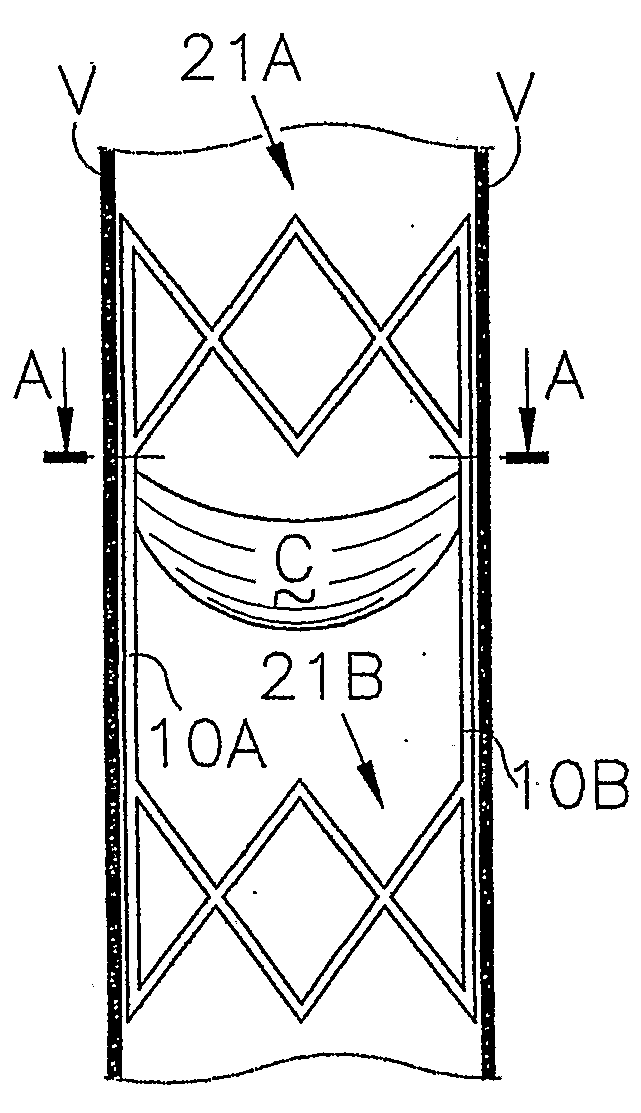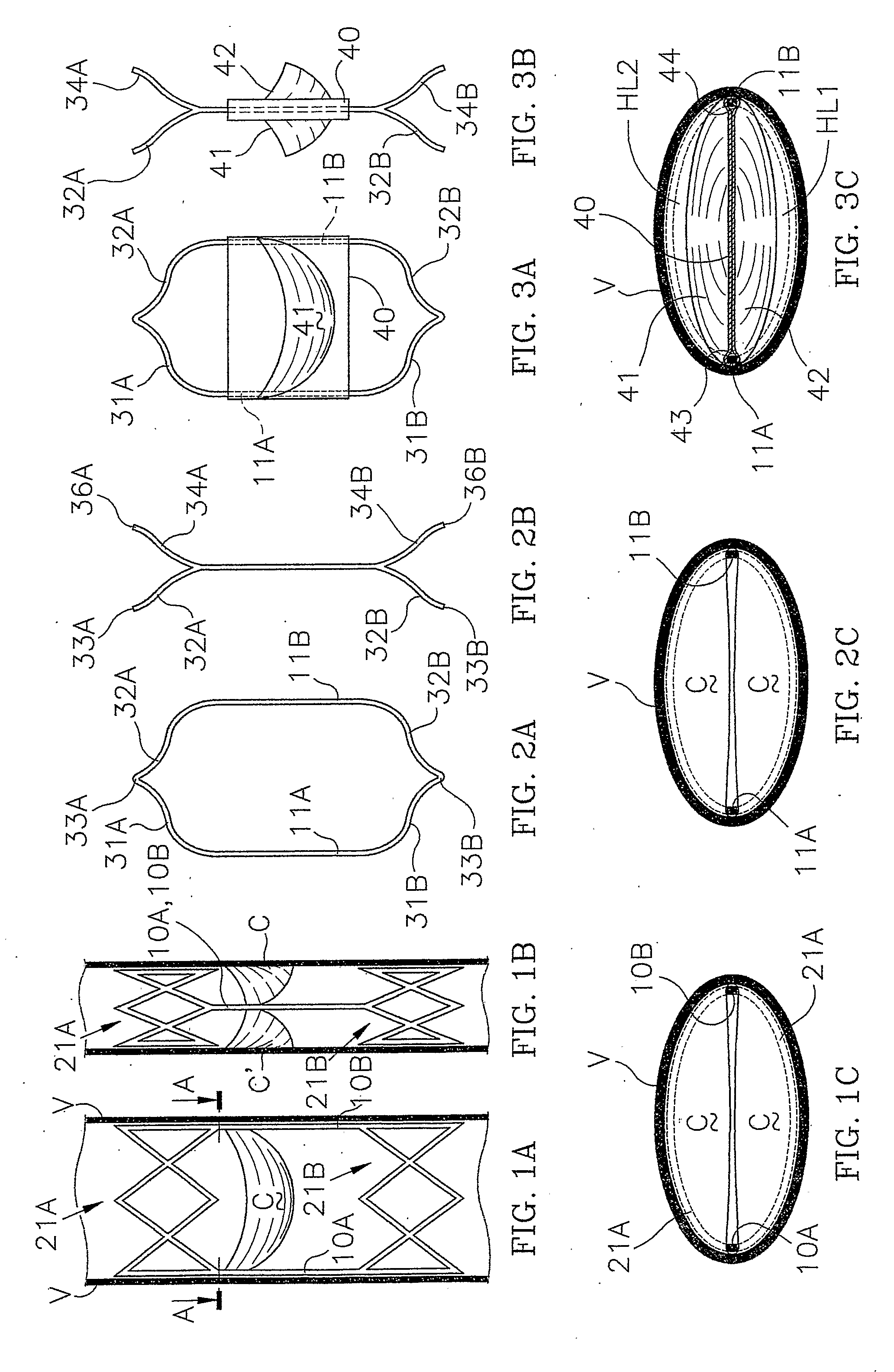Endovenous Stent and Venous Neovalvular Endobioprosthesis
a venous valvular endoprosthesis and endoprosthesis technology, applied in the field of venous valve restoration, can solve the problems of no venous valvular endoprosthesis of such first group actually performing its function, not being actually used in surgery, and being uncertain and approxima
- Summary
- Abstract
- Description
- Claims
- Application Information
AI Technical Summary
Benefits of technology
Problems solved by technology
Method used
Image
Examples
Embodiment Construction
[0054]Referring to FIG. 1A and 1B, an inventive endovenous stent includes a pair of coplanar parallel struts 10A and 10B, which can have the same length. These ones are connected by their extremities by two terminal elastic elements in the shape of elliptic “crowns”21A and 21B, in the same material as the struts, built with the structure of self-expandable stents (well known in the art). Such terminal elements are shaped for a mutual conforming between them and the wall of a vein. The two coplanar parallel struts 10A and 10B, once the stent introduced in vein V, perform the function of dilating the intercommissural diameter of a vein up to the required length, under the compressive force of terminal elements 21A, 21B, so ovalizing the vein as decided by the surgeon. Terminal elastic elements 21A and 21B perform the function of anchoring the stent to the wall of a vein. It is also a function of the latter to keep the vein lumen wide-open in case of an excessive flattening of the vein...
PUM
 Login to View More
Login to View More Abstract
Description
Claims
Application Information
 Login to View More
Login to View More - R&D
- Intellectual Property
- Life Sciences
- Materials
- Tech Scout
- Unparalleled Data Quality
- Higher Quality Content
- 60% Fewer Hallucinations
Browse by: Latest US Patents, China's latest patents, Technical Efficacy Thesaurus, Application Domain, Technology Topic, Popular Technical Reports.
© 2025 PatSnap. All rights reserved.Legal|Privacy policy|Modern Slavery Act Transparency Statement|Sitemap|About US| Contact US: help@patsnap.com


